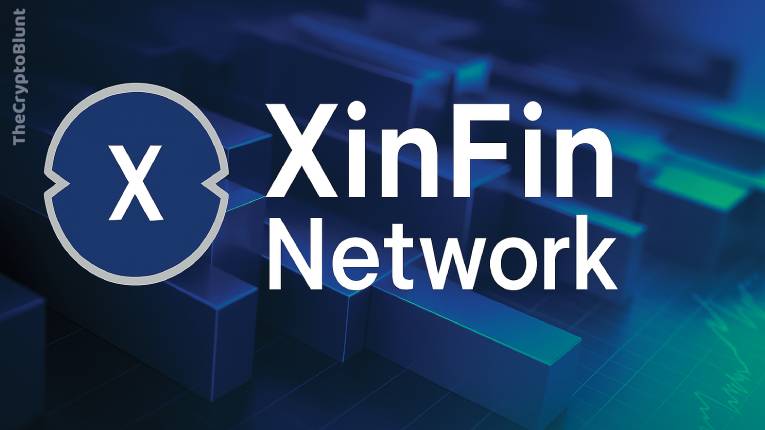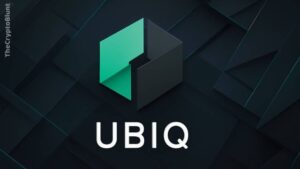The blockchain landscape is incredibly diverse, and early in my crypto journey, I quickly realized that not all blockchains are built the same. Some are designed for general-purpose applications, others for speed, and some, like the XinFin Network, are meticulously crafted to solve specific, real-world problems at an institutional level. The XinFin Network, often referred to as the XDC Network due to its native token, XDC (XinFin Digital Contract), is a fascinating example of a project that recognized the limitations of existing blockchain models and dared to build a hybrid solution.
Imagine a sophisticated digital infrastructure that seamlessly connects the open, transparent world of public blockchains with the secure, private needs of traditional enterprise and finance. This is the essence of XinFin – a pioneering hybrid blockchain platform. It’s designed to bridge the gap that often exists between the innovative, fast-moving decentralized finance (DeFi) space and the regulated, often slow-moving traditional finance (TradFi) sector, particularly in the complex and crucial domain of global trade and finance.
This comprehensive article will be your guide to understanding the XinFin Network Ecosystem. We’ll delve into what makes it unique, how its hybrid approach to blockchain technology functions, and why its native cryptocurrency, XDC, is so integral. We’ll start by revisiting the fundamental concepts of crypto, blockchain, and decentralization to ensure a solid foundation. Then, we’ll dive deep into XinFin’s architecture, its real-world applications in solving tangible problems for businesses and governments, and directly confront common misconceptions about hybrid blockchains and crypto in general.
Finally, we’ll offer a practical, beginner-friendly perspective on how you can safely begin your journey within this evolving ecosystem. Our aim is to provide a clear, no-nonsense introduction for absolute beginners, empowering you to understand XinFin Network’s significant potential in shaping the future of global commerce and finance.
The Digital Bedrock: Core Concepts Revisited for XinFin Network
To truly appreciate the innovative design of the XinFin Network, it’s essential to first grasp the fundamental building blocks of blockchain technology. These are the underlying principles upon which XinFin’s unique hybrid model is built.
1. Cryptocurrency: The Digital Currency of Trust
A cryptocurrency is a form of digital or virtual money that is secured by cryptography, making it virtually impossible to counterfeit or double-spend. Unlike traditional currencies controlled by central banks, cryptocurrencies operate on decentralized networks. This means no single entity has the power to manipulate their value or censor transactions.
XDC (XinFin Digital Contract): The Lifeblood of the Network
The native utility token of the XinFin Network is XDC. It serves as the essential “fuel” for all operations and interactions within the ecosystem:
- Transaction Fees (Gas): Every action on the XinFin Network, whether it’s sending XDC, deploying a smart contract, or interacting with a decentralized application (dApp), requires a small fee paid in XDC. XinFin is known for its near-zero transaction fees, making it highly economical for frequent use and micro-transactions.
- Staking for Network Security: XDC holders can “stake” their tokens to participate in the network’s security and consensus mechanism. By locking up XDC, they become eligible to run or delegate to Masternodes, which validate transactions and secure the network. This participation is rewarded with XDC.
- Governance: As a truly decentralized network, XDC holders have the ability to participate in the network’s governance. They can vote on important proposals, upgrades, and decisions regarding the future direction of the XinFin Network, ensuring community-driven development.
- Collateral and Liquidity: XDC can be utilized as collateral in various decentralized finance (DeFi) applications built on the network, enabling lending, borrowing, and other financial services. It also contributes to liquidity pools on decentralized exchanges (DEXs), facilitating seamless token swaps.
2. Blockchain: The Unbreakable Digital Ledger
Imagine a shared, continuously growing digital record book that is transparently accessible to all participants. Every new entry, known as a block of transactions, is cryptographically linked to the previous one, forming an unbroken chain. This is the revolutionary technology known as a blockchain.
- Decentralized & Distributed: Instead of a single central server or authority, thousands of independent computers (called nodes or validators) across the globe collaboratively maintain and verify copies of the blockchain. This distributed nature makes it incredibly resilient, resistant to censorship, and free from single points of failure.
- Immutability: Once a transaction or data record is added to the blockchain and confirmed by the network, it is virtually impossible to change or delete it. This unchangeable, tamper-proof record fosters unprecedented trust and auditability in digital systems.
- Transparency (Auditable): On public blockchains like the core XinFin Network, all transactions are publicly visible and can be audited through blockchain explorers. While addresses are pseudonymous, the flow of value is transparent.
3. Decentralization: Shifting Power to the Network
Decentralization is the fundamental philosophy underpinning blockchain. It’s the principle of distributing control, decision-making, and data away from a single, central authority (like a traditional bank, government, or corporation) to a network of many independent participants.
In a decentralized system:
- No Single Point of Failure: The network remains operational even if some participants go offline or are compromised.
- Censorship Resistance: No single entity can arbitrarily block transactions, censor information, or shut down the network.
- Trust Through Code: Users don’t need to trust an intermediary; instead, they trust the transparent, verifiable rules embedded directly in the blockchain’s code and the collective agreement of the network participants.
XinFin Network, while designed for enterprise, maintains a strong commitment to decentralization through its consensus mechanism and open-source nature.
4. Smart Contracts: Automated & Self-Executing Agreements
Smart contracts are essentially self-executing agreements with the terms of the agreement directly coded into lines of computer code. They run on a blockchain and automatically execute when predefined conditions are met, without the need for any intermediaries.
- Automation: Smart contracts automate processes, eliminating manual intervention and reducing the potential for human error.
- Trustless Execution: Because they are enforced by code on an immutable blockchain, they provide a “trustless” environment where parties don’t need to inherently trust each other, only the code.
- Backbone of dApps: Smart contracts are the foundational technology for building decentralized applications (dApps) and complex financial protocols (like those in DeFi).
- EVM Compatibility: A significant advantage of the XinFin Network is its full EVM (Ethereum Virtual Machine) compatibility. This means developers familiar with Ethereum’s smart contract language (Solidity) and development tools can easily build and deploy their decentralized applications on the XinFin Network with minimal, if any, modifications. This accelerates development and fosters a vibrant ecosystem.
5. Consensus Mechanism: XDPoS (XinFin Delegated Proof of Stake)
With thousands of independent computers, how does the XinFin Network ensure that everyone agrees on the correct order of transactions and the valid state of the blockchain? This is achieved through a consensus mechanism. The XinFin Network utilizes a highly efficient and environmentally friendly mechanism called XDPoS (XinFin Delegated Proof of Stake).
- Delegated Proof of Stake (DPoS) Explained: Unlike energy-intensive Proof of Work (PoW) systems like Bitcoin, DPoS is much more energy-efficient and scalable. In XDPoS:
- Masternodes/Validators: XDC holders “vote” or “delegate” their XDC tokens to a limited number of elected validators, known as Masternodes. These Masternodes are responsible for verifying transactions, creating new blocks, and maintaining the security and integrity of the network.
- Speed & Efficiency: This system allows for significantly faster transaction processing (XinFin Network boasts 2-second block finality) and near-zero transaction fees. This scalability makes it highly suitable for enterprise-grade applications that demand high throughput and low costs.
- Security & Participation: Masternodes are incentivized with XDC rewards for their honest participation. XDC holders who delegate their tokens to these Masternodes also earn a share of these rewards, encouraging widespread community involvement and enhancing network security.
- Environmental Friendliness: By avoiding energy-intensive mining, XDPoS drastically reduces the network’s energy consumption, making XinFin Network one of the most sustainable blockchain platforms available.
- Double Validation & Randomization: XDPoS incorporates advanced features like double validation (where Masternodes re-check transactions for added security) and randomization (to prevent malicious collusion), further strengthening the network’s integrity and resistance to attacks.
Consider adding an infographic here: “XinFin Network Fundamentals.” Visually represent XDC token as fuel, a simplified blockchain ledger, and the XDPoS mechanism showing XDC holders delegating to Masternodes who validate blocks. Highlight “Fast,” “Cheap,” and “Green.”
XinFin Network’s Unique Approach: The Hybrid Blockchain Model
The true innovation of the XinFin Network lies in its pioneering hybrid blockchain architecture. This concept emerged from the clear understanding that neither purely public nor purely private blockchains could fully address the complex and often contradictory requirements of modern global trade and finance.
The Limitations XinFin Aims to Overcome
- Pure Public Blockchains (e.g., Early Ethereum, Bitcoin):
- Strengths: Highly decentralized, transparent (all data public), censorship-resistant, accessible to anyone.
- Weaknesses: Often struggle with scalability (slow transaction speeds, high fees), lack transaction privacy (all data is publicly visible), and typically do not meet the stringent regulatory, compliance, and data privacy requirements of large enterprises and financial institutions.
- Private Blockchains (Permissioned Blockchains):
- Strengths: Offer high speed, very low transaction costs, complete transaction privacy, and granular control over network participants (only approved entities can join). Ideal for internal enterprise use or consortiums with strict privacy needs.
- Weaknesses: Less decentralized (controlled by a single entity or a small group), less transparent, lower censorship resistance, and often face challenges with interoperability when needing to interact with public networks or other private chains.
XinFin’s Hybrid Solution: The Best of Both Worlds
The XinFin Network (XDC Network) masterfully combines the most valuable attributes of both public and private blockchains, creating a versatile, secure, and compliant platform tailored for the demands of global commerce and finance.
- Public and Private State Capabilities:
- Public Transparency: The core XDC Network operates as a public blockchain. This means the ledger is open and transparent, allowing for verifiable and auditable records of transactions and smart contract executions. The fact that a trade finance transaction occurred and was settled can be publicly recorded, ensuring trust and immutability.
- Private Confidentiality: Crucially, XinFin allows for the creation of private subnetworks or channels where highly sensitive data can be exchanged confidentially and securely between permissioned parties. For instance, the general details of a trade deal might be public, but specific commercial terms, pricing, or sensitive customer identities can remain private between the involved banks and corporations. This is essential for enterprise adoption, where data privacy and compliance with regulations like GDPR are paramount.
- Analogy: Think of a public park (the public chain) where anyone can see who’s playing and where. But within that park, there are private meeting rooms (the private channels) where specific conversations can happen in confidence among authorized individuals.
- Seamless Interoperability:
- The hybrid nature enables XinFin to achieve crucial interoperability. It is designed to effortlessly communicate with both existing public blockchains (like Ethereum) and traditional financial systems (TradFi).
- XinFin supports hybrid relay bridges, which facilitate the secure and compliant transfer of digital assets and information between its public mainnet and private networks, as well as to and from other public chains. This breaks down silos in the blockchain ecosystem.
- Built for Compliance and Regulation (ISO 20022):
- A cornerstone of XinFin’s design is its unwavering focus on regulatory compliance. It is engineered to adhere to global financial messaging standards, most notably ISO 20022.
- What is ISO 20022? It’s a universal language for financial messaging, like SWIFT, that provides rich, structured data for financial transactions. By being ISO 20022 compliant, XinFin ensures that blockchain-based financial messages can be seamlessly understood and processed by traditional financial institutions and their existing infrastructure. This is critical for banks, payment processors, and regulatory bodies to adopt blockchain solutions without a complete system overhaul.
- The network’s architecture also supports Know Your Customer (KYC) and Anti-Money Laundering (AML) measures, which are non-negotiable for institutions dealing with real-world assets and regulated financial activities. This is often achieved through permissioned access layers for specific data or integrated identity solutions.
- EVM Compatibility and Developer Friendliness:
- As mentioned, XinFin’s full EVM compatibility is a major draw for developers. It means that the vast ecosystem of tools, smart contracts, and dApps built for Ethereum can be easily deployed and utilized on the XinFin Network with minimal modifications. This lowers development costs and accelerates the growth of the ecosystem.
The hybrid architecture of the XinFin Network is not merely a theoretical concept; it’s a pragmatic and powerful solution to the complex demands of today’s global trade, supply chain management, and cross-border financial transactions, where the need for both transparency and confidentiality is paramount.
Consider adding an infographic here: “XinFin Network: The Hybrid Advantage.” Visually represent a central public blockchain (XDC) with private channels branching off, illustrating how data can be public or private depending on the use case. Emphasize “Transparency + Privacy,” “Interoperability,” and “Compliance.”
The XinFin Network Ecosystem: Revolutionizing Global Trade & Finance
The XinFin Network’s ecosystem is strategically built to tackle and resolve the deep-rooted inefficiencies within the multi-trillion dollar global trade and finance industry. Its ultimate goal is to facilitate faster, cheaper, and more transparent transactions, opening up new avenues for businesses worldwide.
1. The Persistent Problems in Global Trade Finance
Traditional global trade and finance processes are plagued by a myriad of complexities and inefficiencies:
- Protracted Settlement Times: International payments and trade finance transactions often take days or even weeks to clear, leading to significant capital lock-up and operational delays for businesses.
- Exorbitant Costs: The involvement of multiple intermediaries, extensive paperwork, and manual processes result in high transaction fees, hidden charges, and elevated operational costs.
- Lack of Transparency: Opaque supply chains and convoluted financial flows make it incredibly difficult to trace goods, verify documents, and detect potential fraud, leading to distrust and higher risks.
- Limited Access to Finance: Small and Medium-sized Enterprises (SMEs), which are the backbone of many economies, frequently face immense challenges in accessing trade finance due to stringent requirements, complex procedures, and a lack of verifiable data for lenders.
- Paper-Based Bureaucracy: Heavy reliance on physical documents like Bills of Lading, Letters of Credit, and invoices is slow, prone to errors, and a logistical nightmare for global operations.
- Fraud and Disputes: The absence of immutable records and easily verifiable data creates fertile ground for fraud, leading to costly disputes and undermining trust.
2. XinFin Network’s Solutions: Blockchain for Tangible Impact
The XinFin Network directly addresses these critical pain points through its advanced hybrid blockchain capabilities and its focus on delivering enterprise-grade solutions:
- Rapid Cross-Border Payments & Settlements:
- Solution: XinFin Network’s XDPoS consensus mechanism delivers 2-second transaction finality and near-zero gas fees. This enables virtually instantaneous cross-border payments and the rapid settlement of various trade finance instruments.
- Impact: Drastically reduces capital lock-up, accelerates business cycles, and significantly lowers the costs associated with international transactions, providing a competitive edge for businesses engaged in global trade.
- Tokenization of Real-World Assets (RWAs) and Financial Instruments:
- Solution: Leveraging its EVM compatibility and robust smart contract functionality, XinFin Network enables the tokenization of diverse real-world assets, including invoices, letters of credit, promissory notes, bonds, and even physical commodities. These digital representations (tokens) can then be seamlessly transferred, financed, and used as collateral on the blockchain.
- Impact: Unlocks immense liquidity for previously illiquid assets, democratizes access to trade finance (especially for underserved SMEs), and creates innovative investment opportunities for a wider range of participants.
- Decentralized Trade Finance Platform (TradeFinex):
- Solution: A cornerstone application built on the XinFin Network is TradeFinex.org. This peer-to-peer (P2P) trade finance platform empowers buyers, sellers, and funders to originate, finance, and settle trade transactions directly through smart contracts on the XDC blockchain.
- Impact: Reduces the traditional reliance on multiple banking intermediaries, making financing processes significantly more efficient, transparent, and potentially more cost-effective by directly connecting originators with a diverse pool of funders.
- Enhanced Supply Chain Management and Traceability:
- Solution: XinFin’s hybrid architecture allows businesses to record crucial milestones and verifiable data points within a supply chain on the public chain, while simultaneously ensuring sensitive commercial details remain private. Smart contracts can automate various supply chain processes, from order placement and payment release to delivery confirmation.
- Impact: Boosts transparency across complex supply chains, significantly reduces opportunities for fraud, streamlines logistics, and provides end-to-end visibility of goods from their origin to their final destination.
- ISO 20022 Compliance for Seamless Integration:
- Solution: The XinFin Network is meticulously designed for compliance, adhering to ISO 20022, the international standard for electronic financial messaging. This ensures its seamless interoperability with legacy financial institutions and their existing infrastructure.
- Impact: Facilitates easier integration with banks, payment systems, and regulatory bodies worldwide, thereby accelerating the institutional adoption of blockchain technology for critical financial operations.
- Legal Enforceability and Digital Identity:
- Solution: XinFin is actively involved with legal frameworks, such as the UNCITRAL Model Law on Electronic Transferable Records (MLETR), to ensure that digital trade documents and blockchain-based transactions on the XDC Network are legally recognized and enforceable across jurisdictions. The network also supports robust digital identity solutions.
- Impact: Provides the crucial legal certainty and trust required for businesses to confidently transition from cumbersome paper-based processes to fully digital and legally binding blockchain-based trade.
3. Key Ecosystem Projects and Strategic Partnerships
The robustness of the XinFin Network is not just in its technology but also in its rapidly expanding ecosystem of decentralized applications (dApps), enterprises, and strategic alliances:
- TradeFinex: The flagship platform for decentralized trade finance on the XDC Network, connecting businesses and funders.
- TFD Initiative: XinFin’s XDC Network was the first blockchain to join the Global Trade Finance Distribution Initiative (TFD Initiative), a powerful consortium of major financial institutions focused on automating trade asset distribution.
- SBI Holdings: A significant strategic partnership with one of Japan’s largest financial services companies, focused on enhancing transparency and automation in trade finance.
- Deutsche Telekom: Partnered with the XDC Network as an infrastructure provider, contributing to its decentralization and supporting real-world asset tokenization capabilities.
- Propine: Singapore’s first licensed digital asset custodian, collaborating with XDC for secure custody solutions, crucial for institutional adoption.
- StorX: A decentralized cloud storage network built on XDC, offering secure, private, and cost-effective data storage as an alternative to centralized providers.
- ComTech Gold: A project leveraging the XDC Network for the secure and transparent tokenization of physical gold.
- Growing DeFi & RWA Projects: An increasing number of decentralized finance protocols (DEXs, lending/borrowing platforms) and real-world asset tokenization initiatives are choosing to build on the XinFin Network due to its speed, low fees, and enterprise focus.
Consider adding an infographic here: “XinFin Network: Solving Global Trade Pain Points.” Show specific problems (e.g., Slow Payments, High Costs, Lack of Transparency) and how XinFin’s features (2-sec finality, low fees, RWA tokenization, ISO 20022) directly address them, leading to solutions.
Debunking the Myths: Addressing Common Misconceptions about XinFin and Hybrid Blockchains
The world of cryptocurrency and blockchain often generates a great deal of misunderstanding, and a sophisticated, enterprise-focused solution like the XinFin Network, with its hybrid approach, is no exception. As someone who has navigated these complexities, I understand that clarifying these prevalent myths is absolutely crucial for a deeper and more accurate understanding.
- “The XinFin Network is a private, centralized blockchain entirely controlled by XinFin/XDC Foundation.”
- Reality: This is perhaps the most common misconception, often arising from the terms “hybrid” and “enterprise-ready.” While the XinFin Network is indeed designed to serve enterprise needs and was initiated by the XinFin team, it operates as an open-source, public blockchain with the capability to support private elements for specific use cases.
- Public and Transparent Mainnet: The core XinFin (XDC) Network is a public blockchain. All transactions on the mainnet are transparently recorded and publicly auditable via blockchain explorers. Anyone can run a full node, and XDC holders worldwide can participate in its ecosystem.
- Decentralized Consensus (XDPoS): The XDPoS consensus mechanism relies on a decentralized set of Masternodes (validators) that are elected by XDC token holders through a delegation process. While these Masternodes undergo a KYC/AML process (a necessity for institutional compliance), their collective and distributed operation ensures that no single entity controls the network.
- Hybridity is about Functionality, Not Control: The “hybrid” aspect refers to its unique ability to offer both public ledger transparency and confidential data exchange (e.g., via private subnets or encrypted communication channels) for sensitive business data. It’s about providing a spectrum of privacy options, not about the network itself being centrally controlled.
- XinFin Foundation’s Role: The XinFin Foundation is a non-profit entity dedicated to fostering the growth, development, and adoption of the XDC Network. Its role is to support the ecosystem, not to control the decentralized network’s operations.
- Our Trustworthiness Principle: XinFin seeks to strike a delicate balance between the foundational principles of decentralization and the practical, regulatory demands of large-scale enterprises. Its public mainnet guarantees transparency, while its hybrid capabilities cater to essential privacy needs for businesses.
- Reality: This is perhaps the most common misconception, often arising from the terms “hybrid” and “enterprise-ready.” While the XinFin Network is indeed designed to serve enterprise needs and was initiated by the XinFin team, it operates as an open-source, public blockchain with the capability to support private elements for specific use cases.
- “XDC Network is only relevant for massive corporations and institutions, not for individual crypto users or DeFi.”
- Reality: While XinFin Network has a strategic and impactful focus on revolutionizing global trade and finance for enterprises, it is fundamentally a versatile, EVM-compatible Layer 1 blockchain that fully supports a wide range of decentralized applications (dApps) accessible to individuals and the broader DeFi community.
- Low Fees and Rapid Transactions: Its near-zero gas fees and 2-second block finality make it exceptionally attractive for everyday individual users and retail-focused dApps, where transaction costs and speed are crucial for a smooth user experience.
- EVM Compatibility Advantage: The full EVM compatibility means that a vast array of existing Ethereum-based DeFi protocols, NFT marketplaces, and other dApps can be easily deployed and utilized on the XDC Network with minimal effort, expanding its utility far beyond just enterprise solutions.
- Growing Ecosystem for Everyone: There is a vibrant and growing ecosystem of DEXs, lending/borrowing platforms, NFT marketplaces, decentralized cloud storage (StorX), and other dApps emerging on XinFin that individuals can readily interact with.
- Our Expertise Principle: The network’s enterprise focus is a significant differentiator and a key driver for real-world utility and adoption, but it does not restrict or diminish its value and accessibility for individual users and the wider Web3 space. It simply broadens its appeal.
- Reality: While XinFin Network has a strategic and impactful focus on revolutionizing global trade and finance for enterprises, it is fundamentally a versatile, EVM-compatible Layer 1 blockchain that fully supports a wide range of decentralized applications (dApps) accessible to individuals and the broader DeFi community.
- “XinFin Network’s ISO 20022 compliance means it’s just another part of the traditional banking system and loses its ‘crypto’ essence.”
- Reality: ISO 20022 compliance is a strategic bridge, not a compromise of blockchain principles. It is an intentional design choice to facilitate seamless interoperability and accelerate adoption by regulated financial institutions.
- Universal Financial Language: ISO 20022 is a global standard for rich, structured financial messaging. By building compliance into its core, XinFin enables its blockchain-based financial transactions and data to be readily understood and processed by existing traditional banking infrastructure worldwide.
- Blockchain Core Remains Intact: This integration does not mean XinFin becomes centralized or sheds its blockchain properties. Instead, it means that the format of the data flowing through XinFin can be easily integrated with and processed by traditional financial systems. It allows blockchain technology to operate with, rather than in isolation from, the established financial world.
- Enabling Mass Adoption: This capability is crucial for unlocking institutional adoption. Banks and large corporations need to integrate new technologies with their existing systems and adhere to regulatory frameworks. XinFin’s ISO 20022 compliance provides that essential pathway, enabling blockchain to expand its reach into regulated and high-value financial sectors.
- Our Authoritativeness Principle: The ability to “speak the language” of traditional finance is a strong indicator of a blockchain network’s maturity and its readiness for real-world, large-scale deployment, proving its utility beyond niche crypto applications.
- Reality: ISO 20022 compliance is a strategic bridge, not a compromise of blockchain principles. It is an intentional design choice to facilitate seamless interoperability and accelerate adoption by regulated financial institutions.
- “Blockchain technologies like XinFin Network are environmentally damaging due to high energy consumption.”
- Reality: This misconception is largely rooted in the energy consumption model of older, first-generation Proof of Work (PoW) blockchains like Bitcoin and early versions of Ethereum. However, XinFin Network employs a fundamentally different and significantly more energy-efficient consensus mechanism.
- XDPoS (Delegated Proof of Stake): As highlighted earlier, XinFin Network utilizes XDPoS. This mechanism does not involve energy-intensive “mining” operations. Instead, it relies on Masternodes that validate transactions by staking (locking up) XDC tokens.
- Minimal Energy Footprint: This design makes the XinFin Network remarkably energy-efficient, consuming only a tiny fraction of the energy used by PoW chains. XinFin has consistently emphasized its commitment to sustainability and its operations are designed to be carbon-neutral.
- Our Experience Principle: My initial apprehension about crypto’s environmental impact was eased once I understood the diverse range of consensus mechanisms. Projects like XinFin, which prioritize efficient and sustainable approaches, demonstrate that blockchain innovation doesn’t have to come at the cost of the environment.
- Reality: This misconception is largely rooted in the energy consumption model of older, first-generation Proof of Work (PoW) blockchains like Bitcoin and early versions of Ethereum. However, XinFin Network employs a fundamentally different and significantly more energy-efficient consensus mechanism.
Your First Steps: Embarking on Your XinFin (XDC) Journey
If the promise of a faster, cheaper, and more integrated global finance and trade experience through the XinFin Network has captured your interest, and you’re ready to take your first steps, here’s a practical, beginner-friendly guide. Please remember that the cryptocurrency market is inherently volatile and speculative. This information is purely for educational purposes and should not be considered financial advice. Always conduct your own thorough research (DYOR) and understand the inherent risks before engaging in any crypto-related activity.
1. Acquiring XDC: Your Gateway to the Network
The XDC token is the native utility token of the XinFin Network and is essential for paying transaction fees and participating in the ecosystem.
- Centralized Exchanges (CEXs) – Recommended for Beginners: This is generally the most straightforward method for new users to acquire XDC, especially from India.
- Choose a Reputable Exchange: Select a well-regarded global or Indian exchange that lists XDC. Look for platforms with a strong security track record, good liquidity for XDC pairs, and compliance with local regulations. Popular global exchanges that list XDC include KuCoin, Bitfinex, Gate.io, and others. For users in India, platforms like Mudrex, Bitbns, or MEXC Global might offer XDC pairs and convenient fiat on-ramps (e.g., via UPI, bank transfer). Always ensure you are using the official website or app of a verified exchange to avoid phishing scams.
- Sign Up & Complete KYC: Create an account and complete the mandatory Know Your Customer (KYC) verification process. This typically involves providing government-issued identification documents to comply with anti-money laundering (AML) regulations.
- Deposit Funds: Deposit fiat currency (e.g., Indian Rupees via UPI, IMPS, or bank transfer) or another commonly traded cryptocurrency (like USDT or BTC) into your exchange account.
- Buy XDC: Navigate to the trading section of the exchange, locate the XDC trading pair (e.g., XDC/USDT, XDC/INR), and place a buy order. You can typically choose between market orders (buying at the current price) or limit orders (setting a specific price you wish to buy at).
- Decentralized Exchanges (DEXs) – More Advanced: If you already hold other cryptocurrencies in a non-custodial wallet on an EVM-compatible network, you can potentially swap for XDC on a DEX that supports the XDC Network. This method requires more technical familiarity, understanding of bridging assets, and managing gas fees on multiple chains. For beginners, the CEX route is significantly simpler.
2. Storing Your XDC: Securing Your Digital Funds
Once you acquire XDC, it is absolutely crucial to move it to a secure, non-custodial wallet where you have sole control over your private keys. Remember the adage: “Not your keys, not your crypto.”
- Software Wallets (Hot Wallets): These are applications that are convenient for regular transactions but are connected to the internet (“hot”).
- XDCPay: This is the official browser extension wallet specifically designed for the XinFin Network, similar to MetaMask for Ethereum. It offers native support for XDC and all XDC-based tokens. It’s often the most recommended software wallet for dedicated XDC users.
- MetaMask: Since XinFin Network is EVM-compatible, you can use MetaMask, the most popular browser extension and mobile wallet. You will need to manually add the XDC Network to MetaMask.
- Network Name: XDC Network Mainnet
- New RPC URL: https://rpc.xinfin.network
- Chain ID: 50
- Currency Symbol: XDC
- Block Explorer URL: https://xdc.blocksscan.io/ (or https://explorer.xdc.org/)
- Other Multi-Currency Wallets: Some popular multi-currency mobile and desktop wallets like Trust Wallet, Exodus, or Atomic Wallet might offer support for XDC. Always verify compatibility on their official websites.
- The Golden Rule: Back up your seed phrase (recovery phrase)! This sequence of 12 or 24 words is the master key to your wallet and your funds. Write it down physically on paper, store multiple copies in secure, private, and separate locations (e.g., a fireproof safe, a locked drawer). Never store it digitally (e.g., on your phone, in email, cloud storage, or screenshots). Never share it with anyone. Losing this phrase means losing access to your funds forever.
- Hardware Wallets (Cold Storage) – Highest Security: For significant amounts of XDC or any cryptocurrency, a hardware wallet (like Ledger or Trezor) provides the highest level of security. These devices store your private keys offline, making them impervious to online hacks and malware.
- Always check the official documentation of your specific hardware wallet model to confirm its support for the XDC Network. Typically, you would connect your hardware wallet to a software wallet like MetaMask (after adding the XDC network) to manage your XDC assets securely.
3. Engaging with the XinFin (XDC) Ecosystem: Putting Your XDC to Work
Once your XDC is securely stored in your non-custodial wallet, you can begin to explore and participate in the vibrant XinFin Network ecosystem:
- Participate in DeFi:
- Decentralized Exchanges (DEXs): Swap your XDC for other tokens, or contribute your XDC (and other tokens) to liquidity pools on DEXs built on the XDC Network (e.g., Globiance DEX, Prime Numbers DEX) to earn a share of trading fees.
- Lending & Borrowing Protocols: Explore various lending platforms on XDC where you can deposit your XDC to earn interest, or use XDC as collateral to borrow other digital assets.
- Staking XDC (for Masternodes or Delegation):
- Run a Masternode: This is generally for advanced users and requires a substantial XDC stake (currently 10 million XDC) along with technical expertise to set up and maintain the node. Masternodes earn significant rewards for their role in securing the network.
- Delegate XDC: A more accessible option for individual XDC holders is to delegate their XDC to an existing Masternode. This allows you to earn a share of the Masternode rewards without needing to run your own hardware. Many wallets or third-party platforms facilitate this delegation process.
- Explore Decentralized Applications (dApps): Browse the growing list of dApps within the XinFin Network ecosystem (check the official XinFin website for an updated list of projects). These can include:
- Trade Finance Platforms: While some are enterprise-focused, you might find educational interfaces or demo versions of platforms like TradeFinex, showcasing how real-world trade finance is being revolutionized.
- NFT Marketplaces: Discover platforms where you can buy, sell, or even create Non-Fungible Tokens (NFTs) on the XDC Network.
- Decentralized Cloud Storage: Explore platforms like StorX for secure, decentralized, and private cloud storage solutions.
- Other Web3 applications: Keep an eye out for new and innovative gaming, social, and utility applications that are choosing to build on XDC.
- Stay Informed and Engaged: Join the vibrant XinFin/XDC Network community on official channels such as Telegram, Discord, and X (formerly Twitter). Regularly check the official XinFin.org website for the latest news, announcements, and ecosystem developments. These communities are excellent places to ask questions, share insights, and connect with other users and developers.
Essential Beginner’s Advice for Safe Crypto Navigation:
- Start Small: Begin your journey with a modest amount of XDC to familiarize yourself with the processes, wallet interactions, and network dynamics before committing larger sums.
- Understand Transaction Fees (Gas): Even though XDC Network boasts near-zero fees, you will still pay a very small amount in XDC for every transaction. Understand how these “gas” fees work.
- Prioritize Security: Always double-check wallet addresses before sending funds, verify website URLs (especially for exchanges and dApps), enable two-factor authentication (2FA) on all your exchange accounts, and, most importantly, never share your seed phrase or private keys with anyone. Be highly vigilant against phishing attempts and social engineering scams.
- Thorough Research (DYOR): Before interacting with any decentralized application or investing in any project, conduct thorough research into its reputation, security audits, and the specific risks involved (e.g., smart contract bugs, impermanent loss in liquidity pools).
- Tax Implications: Be aware of the potential tax implications of cryptocurrency transactions in India. Maintain meticulous records of all your crypto activities for accurate tax reporting.
Conclusion: XinFin Network – Paving the Way for Hybrid Finance and Global Trade
The XinFin Network, with its XDC token, stands as a testament to the evolving sophistication of blockchain technology. By pioneering a hybrid architecture that ingeniously combines the transparency and decentralization inherent in public blockchains with the crucial privacy and compliance demanded by enterprises, XinFin is uniquely positioned to revolutionize and streamline the multi-trillion-dollar global trade, finance, and supply chain industries. It systematically addresses entrenched inefficiencies, exorbitant costs, and pervasive trust deficits that have long plagued traditional systems, offering a paradigm shift towards faster, more transparent, and significantly more affordable solutions.
From its highly efficient and eco-friendly XDPoS consensus mechanism to its steadfast ISO 20022 compliance and its profound focus on the tokenization of real-world assets, the XinFin Network is not merely an abstract technological concept. It is actively building the infrastructure that facilitates the seamless integration of blockchain with existing global financial systems. Its core mission is to enable businesses, governments, and financial institutions to confidently adopt blockchain solutions without compromising their regulatory obligations or sensitive data privacy requirements.
As the world increasingly acknowledges and embraces the transformative power of blockchain beyond purely speculative assets, platforms like the XinFin Network, with their robust real-world applications and unwavering commitment to compliance, will undoubtedly play a pivotal role in shaping the future of global commerce. For beginners, understanding XinFin means gaining insight into how blockchain can truly impact the global economy, fostering a more inclusive, efficient, and reliable financial ecosystem for everyone. We wholeheartedly encourage you to delve deeper into XinFin’s official resources, explore its burgeoning ecosystem of dApps, and engage with its vibrant community, as the XinFin Network continues to redefine the landscape of hybrid finance and the interconnected digital world.
























